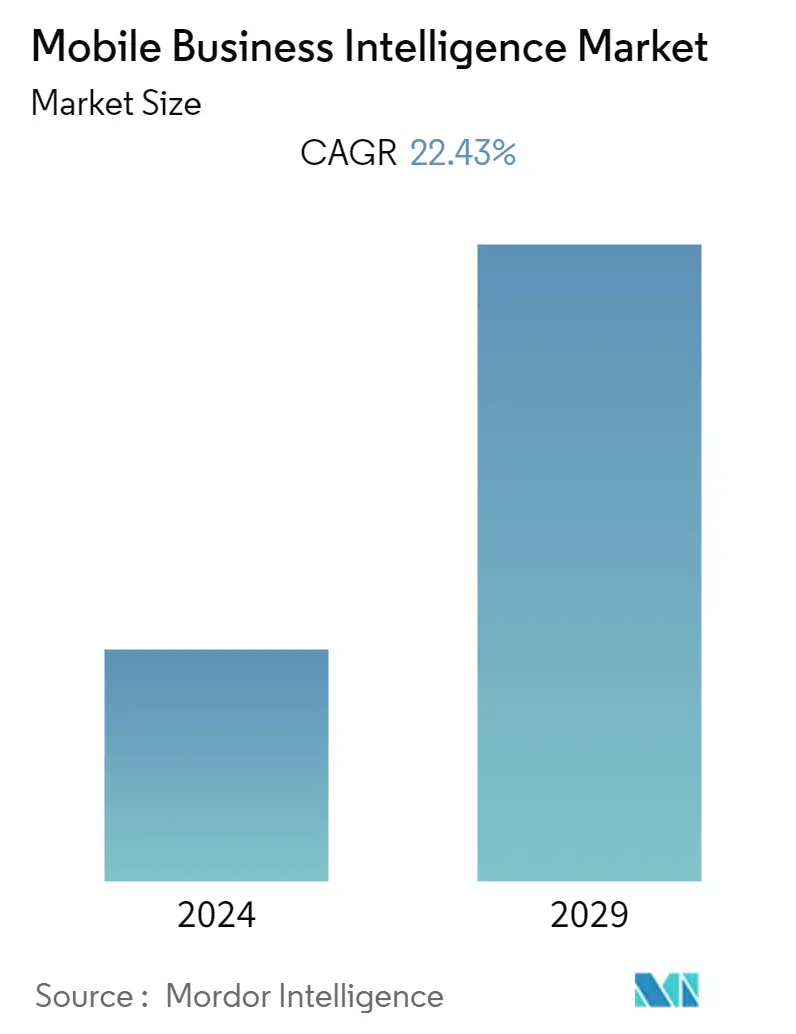Market Size of Mobile Business Intelligence Industry

| Study Period | 2019 - 2029 |
| Base Year For Estimation | 2023 |
| CAGR | 22.43 % |
| Fastest Growing Market | Asia Pacific |
| Largest Market | North America |
| Market Concentration | Low |
Major Players
*Disclaimer: Major Players sorted in no particular order |
Need a report that reflects how COVID-19 has impacted this market and its growth?
Mobile Business Intelligence Market Analysis
The Mobile Business Intelligence Market is expected to register a CAGR of 22.43% over the forecast period 2021 to 2026. In the present scenario, devices with advanced capabilities, such as AI and ML, are emerging across industries, representing the latest wave of rapid progress. These technologies are redefining the way businesses work, enabling machines to do things that were possible by humans only. Data visualization tools have been increasingly used for analytics in various organizations, over the years. They are used for designing infographics and charts, as well as building BI dashboards and performance scorecards. These charts and dashboards display visualized data on business metrics and key performance indicators in an easily understandable way.
- With the emergence of big data and the increasing need to make critical business decisions within a compressed timeframe, the business intelligence (BI) and analytics tools have gained a substantial market share in the past decade. This trend is expected to increase steadily, along with the advancement of technology and growing investments, during the forecast period.
- The ongoing trend of increasing acceptance of BYOD in enterprises is expected to enhance productivity and employee satisfaction while reducing hardware costs for large and small enterprises. Further, the integration of IoT that allows mobile devices to communicate, analyze, and share data via cloud-based software platforms and networks is anticipated to drive the market growth.
- Furthermore, with massive growth in the amount of data generation, companies have started deploying BI tools to get hold of enormous data sets, with higher volumes and varieties, and get deeper insights from the data. The resulting information can be used for various functions in an organization, from marketing and sales to supply chain and finance.
- It is estimated that mobile devices are responsible for over 72% of internet traffic, and it is growing at a rapid pace. This is attracting many end-user industries, especially the retail sector, to make mobile devices a major platform for their operations.
- The retail sector, especially e-commerce operations, is expected to be the primary source of demand for mobile analytics solutions closely followed by the banking sector. Increasing demand for automation in the BFSI sector and the e-commerce companies' efforts to create personalized shopping experience are expected to draw huge revenues to the mobile BI market globally.
- Moreover, there is a substantial increase in the need for data analytics and data visualization tools. For instance, according to the IBM Quant Crunch, up to 2.72 million jobs, which require data science skills, are likely to be posted by 2020, making it one of the highest-demanded roles across industries.
- The COVID-19 pandemic has resulted in a shift in working patterns, driving demand from enterprises to equip remote workers with resources they need, to be productive on mobile devices. Thus the market will expereince significant growth in the future due to the pandemic caused by an exponential usage of smartphones and tablets.
